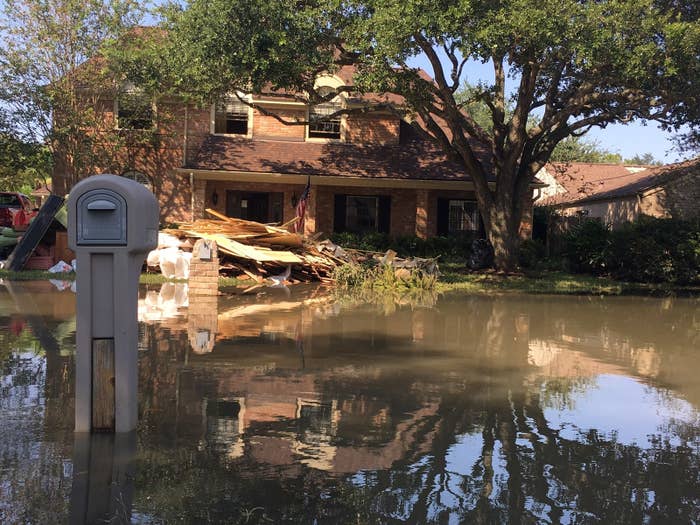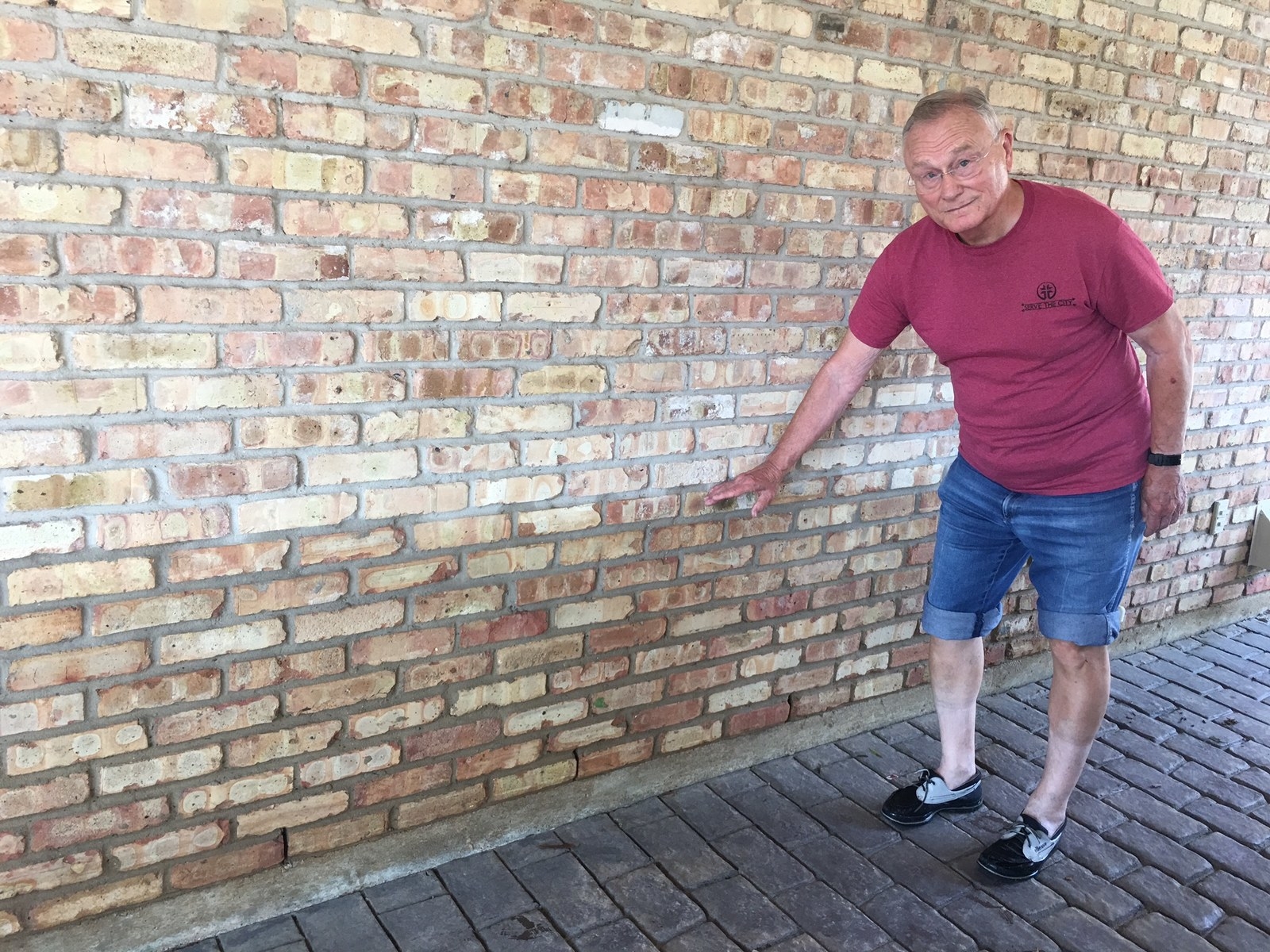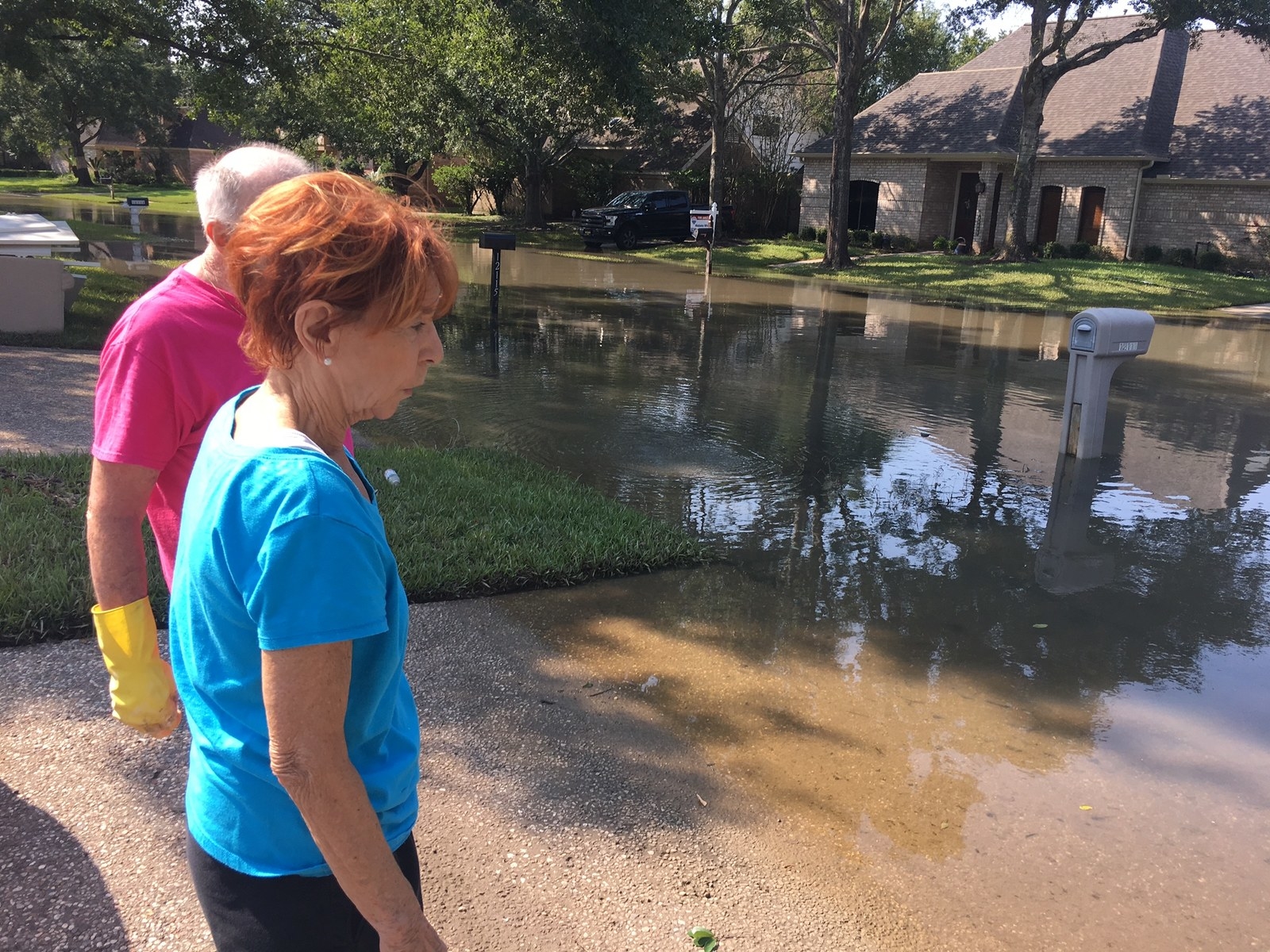
HOUSTON — The rain had finally stopped, and when Cristina Scholtyss saw that the water on the flooded street reached only to the tip of her driveway, she let out a sigh of relief.
But then the water kept coming.
“We were so happy it wasn’t raining anymore,” Scholtyss told BuzzFeed News. “But the water got higher and higher.”
Floodwaters streamed so quickly through the residential streets along the Buffalo Bayou, in West Houston, that some residents feared the nearby Addicks and Barker dams had broken. Instead, residents learned that the US Army Corps of Engineers was releasing water from the dams, flooding nearby subdivisions even as the storm was abating.
Now, more than a week after Tropical Storm Harvey wreaked havoc on the region, some West Houston residents with homes near the dams blame the US Army Corps — and not the storm itself — for the catastrophic flooding. As bad as Harvey was, they said, it wasn't until after the rain had stopped that their homes suffered the worst damage.
On Tuesday, Houston attorney Bryant Banes filed a lawsuit against the federal government, accusing the US Army Corps of knowingly causing catastrophic flooding in the area by releasing the dams. The suit claims the move resulted in millions of dollars of damage to homes and businesses, including many that were not directly impacted by the storm.
Banes, whose home is in the flooded area, told BuzzFeed News he does not question US Army Corps' decision but believes the federal government is liable for the damages.
“The US Army Corps of Engineers made a choice. They knew what would happen,” said Banes, who is named as both plaintiff and attorney in the lawsuit. Another nearby resident is also named as a plaintiff, and several residents who spoke to BuzzFeed News said they were considering joining the suit.
The suit does not specify how much compensation is being sought for the homeowners; Banes said it is not yet clear how many structures were severely impacted by the floods.
Officials made the call to start letting water out of the Addicks and Barker soon after Tropical Storm Harvey hit the Houston area, and torrential rains quickly threatened to overflow the 70-year-old reservoirs for the first time ever. In an effort to prevent water from coming over and around the dams, the US Army Corps began a controlled release, letting out 3,500 cubic feet per second from each dam, and later doubling the flow to 7,000 as the storm subsided.
“Both reservoirs are rising more than half-a-foot per hour,” Col. Lars Zetterstrom, commander of the US Army Corps Galveston district, said in an Aug. 28 statement announcing the decision.
"If we don't begin releasing now, the volume of uncontrolled water around the dams will be higher and have a greater impact on the surrounding communities," the statement said.

“The decision to make the increased controlled releases was a difficult, but necessary one that we did not take lightly,” Edmond Russo, a deputy engineer for the US Army Corps Galveston District said in a statement.
Constructed in the 1940s, the Barker and Addicks dams were designed to prevent flooding in downtown Houston, by controlling the flow of water into Harris County's main waterway, Buffalo Bayou. Even in heavy rains, water is held behind the dams' embankments and then moves through gates into the bayou.
But the amount of rainfall brought on by Tropical Storm Harvey was far beyond anything the dams had held in the past.
"More than a trillion gallons of water fell over the Houston area," Zetterstrom told reporters at a press conference Monday. At their peak, the dams held back more than 140 billion gallons of water during the storm, he added.
Not only was the US Army Corps of Engineers trying to mitigate the pressure of the water on the nearly 70-year-old structures, but they were trying to prevent water from streaming down the sides of the dams at a faster, uncontrollable rate, Zetterstrom said.
"We had never inundated anybody's homes prior to this year in the more than 70 years of these structures' operations," he said. "That extra 140 billion gallons would have gone through, you know, to the city of Houston through the watershed and caused even more significant damages that was caused by this unparalleled weather event."
But homeowners living in the subdivisions along Buffalo Bayou told BuzzFeed News that it was their homes that were sacrificed for that decision.
The Harris County Flood Control District, which works with the US Army Corps of Engineers as a local partner for flood control, referred all questions to the US Army Corps of Engineers. The US Army Corps of Engineers did not respond to BuzzFeed News' request for comment for this story.

Mike Speakmon, whose home sits about 10 miles south of one of the dams — but just blocks from Buffalo Bayou — said the flooding rose so quickly he and his wife were barely able to evacuate their home. When the water reached the bottom of the front door, they decided to leave.
By then, it was nearly impossible to get out, Speakmon said. For a few seconds, he added, it felt like their white Jeep had been picked up in the flood, as water splashed over the hood.
“I bet five more minutes and we would have had to stay here,” he told BuzzFeed News as he tried to assess the damage to his home Wednesday.
Another local resident, Cecil Holder, said he and his wife were trapped inside their home as water gushed through their backyard and into their house. They watched as it quickly filled their living room, with the sofa, chair, and coffee table bobbing up and down in the water.
“We were fine during the rain, but it was during the release that flooded us,” Holder told BuzzFeed News, walking across the warped hardwood floors that now rose up to a foot, like frozen waves. “The rain had already stopped before we got any water in here.”

Though officials issued mandatory evacuation orders for the neighborhoods around the reservoirs, warning that flooding could make the houses uninhabitable, several residents said they received little advance warning of the sudden increase in flooding.
“They could've told us ahead of time," Speakmon said. "I felt like they should have sounded the alarm or something." By the time he caught news reports about the release, he said, the water was already rising toward his doorstep.
Now, as other parts of the Houston metro area begin to return to normal, everyday life, residents along the Buffalo Bayou are still pulling drywall out of their homes and trying to dry out cars that filled with water during the floods. Some still can't walk into their homes because the slowly receding water still blocks their path.
On Wednesday, Rudy Scholtyss was helping his daughter-in-law gut her home of everything that was ruined by the flood. Inside, water at one point reached over two feet deep, ruining much of the furniture and possessions.
Scholtyss and his wife, Cristina, still can’t get into their home because water in the street still reaches chest deep.
“You know what we are?" he asked, pausing a second to answer his own question. "Collateral damage.”

Though many residents told BuzzFeed News they were caught off guard by the floods, local and federal officials had warned community members before that the growth in development near the dams had increased the risk of flooding.
“Whenever you develop land, typically the runoff increases, and so, these reservoirs are going to fill up a lot faster than they used to,” Col. Richard P. Pannell, of the US Army Corps of Engineers, told some residents at a community meeting last March.
At the time the dams were built, Pannell said, they had been surrounded by farmland, but an explosion of development in the Houston area in the last two decades had brought homes right up to the edge of the dams. That put the area in a precarious position, he explained: If the dams retained too much water, homes built behind the reservoir could flood. If it released water too quickly, homes downstream of the bayou could flood.
"The city of Houston has been growing very, very rapidly, and now you also have this aging infrastructure," Pannell said at the 2016 meeting. "So the likelihood of an issue is probably increasing and the consequence is increasing."
Officials reassured residents there was no sign the dam would break. But they added that the chances of having to release water — despite it never being done in the past — was a possibility.
Despite the aging dam, and the increased risks laid out by federal and local officials, nearly a dozen homeowners whose homes had been flooded by Harvey said they flood insurance was not required in the terms of their mortgages. Those who did have flood insurance said they did so only out of an abundance of caution.
Flood insurance was originally required when Gary Chisholm moved in, just blocks south of Buffalo Bayou. But in 1993, he said, the bank notified him that the coverage was no longer needed.
"They told me I wasn’t in the flood zone,” Chisholm told BuzzFeed News. So he canceled it.
Speakmon said insurance was not required when he bought his home, but he decided to get it anyway.
“I’m not stupid," he said. "And there’s a freaking dam down there."
If you've been impacted by the storm in Texas or have a tip about rescue, relief, government, or aid efforts, call the BuzzFeed News tipline at (646) 589-8598. Find us on Signal, email, SecureDrop, and more here.

